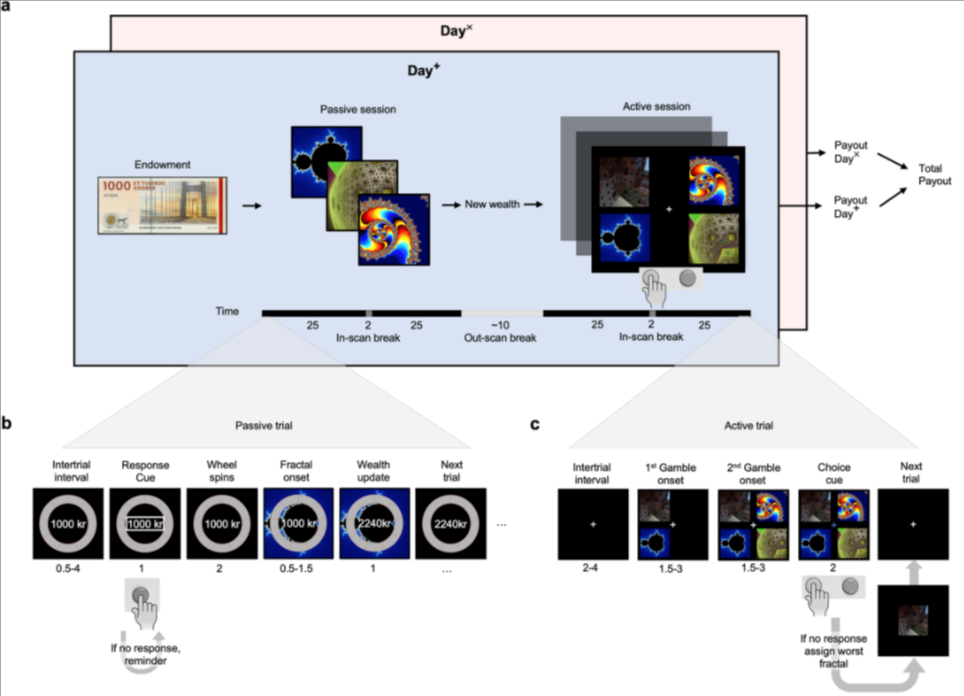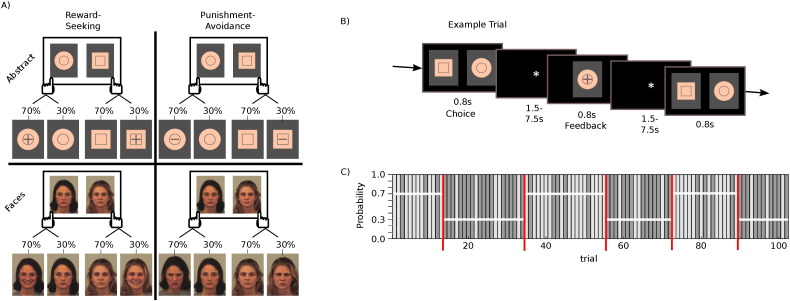WHAT IS COGNITIVE AND COMPUTATIONAL NEUROSCIENCE?
Cognition is broadly defined to include a wide spectrum of faculties that we all take for granted as part of our mental toolkit: learning, decision-making, attention, reasoning, memory, language, and motor control... to name a few. Appropriately, cognitive neuroscience is the subfield of neurobiology charged with elucidating the neurobiological underpinnings of these faculties.
Computational Neuroscience, on the other hand, is a subfield of neurobiology in which mathematical tools are used to develop and test theories of brain function. This commonly incorporates diverse approaches from computer science, physics, psychology, engineering, and mathematics, in order to understand how the nervous system performs its computations, and why.
Cognitive and computational neurosciences constitute a major research theme here at DRCMR. Our long-term vision is to pioneer new methodologies for bridging between computational modelling of cognition and neuroimaging and to use this to understand brain function in health and disease. The key among these methodological efforts is to develop advanced methods for fitting computational models directly to neural data, allowing us to map how different computational and cognitive variables are encoded and patterned over the anatomy of the brain.
The cognitive and computational research theme comprises a cluster of five different research groups each asking different types of question. We meet as a group once every six weeks to exchange ideas and figure out ways of working together. We run a week-long PhD school “Cognitive and Computational Neuroimaging” approximately every three years.
DECISION-MAKING AND REWARD
There is an active community of scientists working on decision making and reward within this research theme. Each are asking different questions. How do we make choices in risky settings? Can we change our willingness to take risks and how? How do we make decisions in sequential settings, where we have to make many decisions that may interact over time? How do we find rewards in a complex environment? do we forage in ways similar to other animals? How does our decision making change when we up the stakes? What if we could lose lots of money? How do rewards depend on our homeostatic state? These questions are formalised through economic, cognitive, and computational models, the predictions of which are incorporated into the analysis of EEG and fMRI data. With the encoding of computational variables mapped in healthy brains, these studies are being extended to clinical populations on and off medication, to infer the impact of pathologies on these processes.
The Computational Neuroscience of Reward group seeks to build fundamental theories of reward value that are grounded in our physiology, our evolutionary history, and even abstract mathematical principles.
The group collects a diversity behavioral data (choices, physical effort, ratings…), physiological data (metabolic states, endocrine state) and neural data (fMRI, structural MRI, diffusion) and relates these to theoretically inspired questions using computational and cognitive models. Through collaboration these models can be tested in animal behavior also.


SENSORY SYSTEMS
Also with the research theme, we have a number of sensory neuroscientists engaged in research on the neural basis of audition, using detailed anatomical functional mapping procedures and multivariate computational methods.
MOTOR SYSTEM
There are many researchers within this research theme interested in the motor system.
The Control of Movement group is a large community of researchers, investigating how the brain engages in motoric control of its body, integrating sensory information, skill-learning and optimising motor action. Their emphasis is on mapping and computationally modelling motor control mechanisms with EEG and fMRI, on modulating these mechanisms with stimulation methods such as direct current stimulation and transcranial stimulation.
The Movement Disorders group bridges clinical, computational and cognitive neuroscience to advance the pathophysiological understanding of movement disorders. We apply computational models of learning and decision-making to probe disease-induced changes in brain and behavior. Observing which parameters of these models are changed in the disease can then lead to a mechanistic understanding, explaining not only that there are disease-induced changes, but how the changes occur at the neural and symptomatic level. Beyond computational modeling, the group has a focus on ultra-high resolution MR-imaging and brain stimulation techniques.

From Haagensen et al. (2020) Neuroimage:Clinical. Using a gambling task, we found several differences in activity and connectivity patterns that might make PD patients with impulse-control disorders (ICD) more vulnerable to the emergence of ICD compared to PD patients without ICD.
PSYCHIATRY
There is a growing connection between computational neuroscience and psychiatry. Increasing the tools of computational neuroscience are being turned to ask what goes awry in psychiatric disorders.
The developmental psychiatry group focuses prediction and characterization of psychiatric disorders across the lifespan. Thereby we seek to contribute to the development of new prevention and personalized treatment strategies. In close collaboration with our clinical partners, we employ state of the art multimodal brain imaging and electrophysiological techniques to elucidate, characterize and monitor the neurobiological and neurocognitive signatures of risk, resilience and disease in different at-risk and neuropsychiatric populations.

AGEING
Within this research theme, a group of researchers is particularly interested in how ageing impacts brain function, and whether detrimental age-related effects on the brain can be halted or delayed. The Healthy Ageing group characterizes brain aging using multimodal MRI including structural, functional, and metabolic imaging. In addition, an integration between cognitive and MRI outcomes enables them to better understand the brain-cognitive relationship in aging. The team always covers several different tests within each cognitive function, so that conclusions can be made at the cognitive domain level rather than at the single-test level. Finally, to tackle the notable inter-individual differences in the cognition and brain aging relationship, the team applies a range of computational methods to large cohort and intervention studies.

Figure adapted from Nyberg et al., 2020 Ageing Research Reviews, 64:101184.



